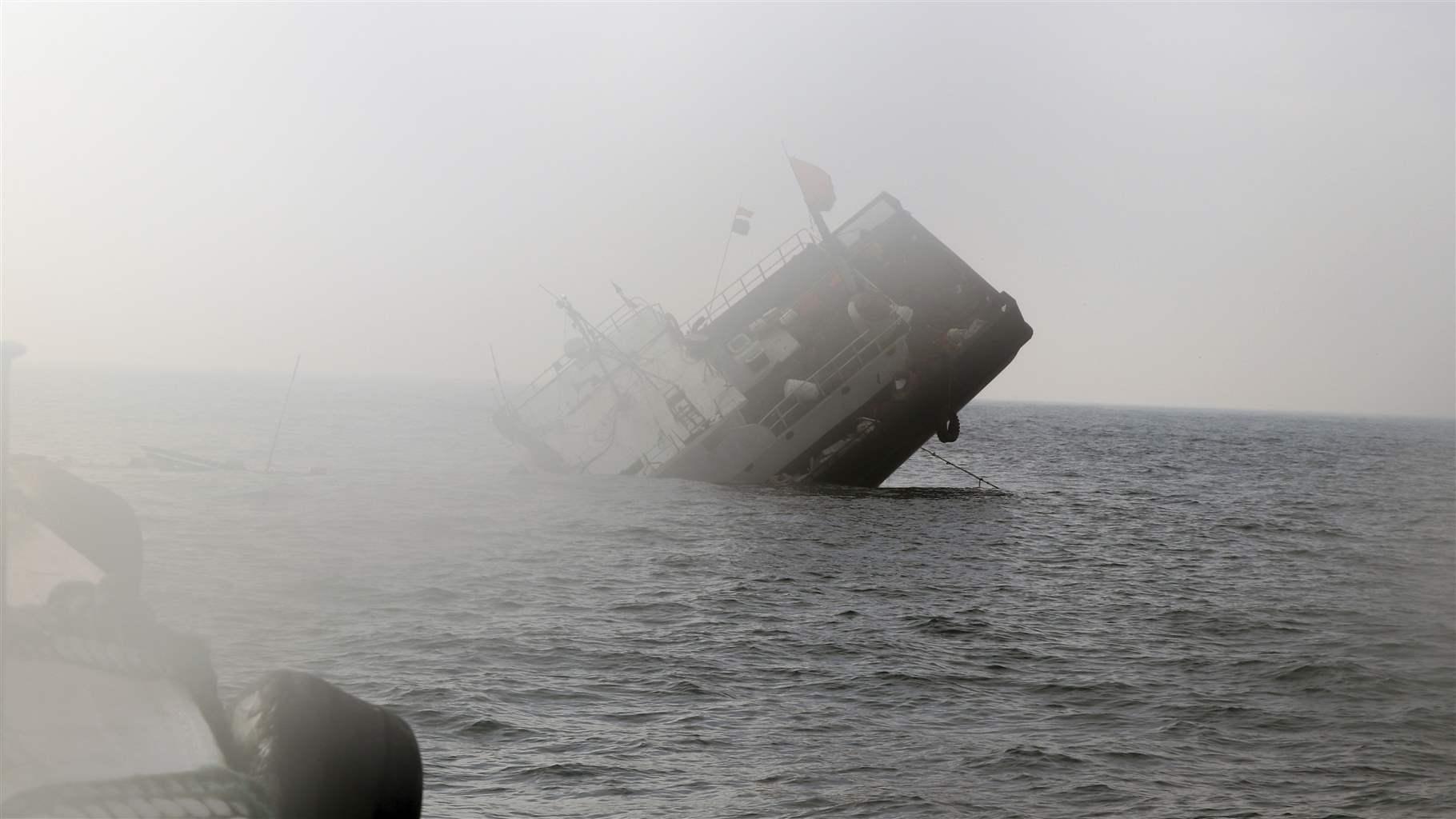If Governments Have the Tools to Stop Fishing-Related Deaths, Why Aren’t They Being Used?

Long before Hollywood highlighted the dangers of commercial fishing in The Perfect Storm, Deadliest Catch and other programming, governments around the world knew that this was one of the most hazardous jobs, killing thousands of fishers every year.
Until last fall, how many people perish while working in the seafood industry has never been clear. But now, through research commissioned by The Pew Charitable Trusts and conducted by the FISH Safety Foundation, a nonprofit organization in New Zealand dedicated to improving safety at sea, we know the truth: Worldwide, fishing is responsible for the deaths of more than 100,000 people every year, along with a staggering number of life-altering injuries. And although there is a way to limit some of these risks, namely through the ratification of an international treaty known as the Cape Town Agreement (CTA), there has been little movement to date protecting fishers. But with the CTA, which is the only global agreement specifically designed to tackle the safety of the environment fishers work in, this could change. This agreement focuses on safety standards for industrial-size fishing vessels and would grant fishers the same structural integrity, safety precautions, and training that have been in place for other seafarers for decades.
More than 3 billion people rely on seafood for a significant source of protein, and the Food and Agriculture Organization of the United Nations (FAO) expects that demand to grow. But although many of us are familiar with the thrill of the chase depicted in media—big fish, bigger boats and even bigger waves—we’re unfamiliar with who is most at risk on the water. The answer is vulnerable and lowest-income people.
People, often the most marginalized, are frequently coerced and even forced to work on unsafe vessels and in conditions that in many cases meet the definition of slavery—long workdays, crowded and filthy sleeping quarters, violent and abusive superiors, insufficient nutrition, little or no safety equipment or medical care, and no chance of escape. These conditions have been documented throughout the world’s ocean, in both national and international waters, from the largest industrial ships to small subsistence rafts and canoes.
Three intergovernmental bodies share responsibility for fishing, fishers and safety: the FAO, along with the International Labour Organization (ILO) and the International Maritime Organization (IMO). But none have full decision-making authority—and all lack the data to expose the dangerous realities of commercial fishing. To make matters worse, coordinated action across these organizations has been missing.
But today, there’s no longer any excuse for ignoring the high death rates at sea. The Cape Town Agreement—coupled with two other treaties—give authorities the leverage they need to protect fishers on large-scale industrial vessels that traverse international waters.
Fisher safety provides a powerful incentive for full ratification of the CTA. And the agreement should not be difficult to implement; many developed nations have already adopted its recommended guidelines for their fleets. Unfortunately, this fact is being used as an argument against the treaty. Specifically, that because some large fleets already adhere to the guidelines, ratification is unnecessary and will not improve safety for fishers. But this misses an important point. Ratification will help show leadership and encourage other countries to improve safety standards, which could help the most endangered workers.
The agreement needs 22 countries with a combined 3,600 vessels to go into force. Ratification by three more countries, with a combined 1,500 eligible vessels, will meet that goal. However, it should have been met already. In 2019, 51 countries committed to ratify the agreement by October 2022, but most haven’t followed through, despite the number of fatalities each year. Those avoidable deaths should move these countries to act—now. The other two treaties in force are the FAO Port State Measures Agreement, which works to prevent illegally caught fish from entering the seafood supply chain, and the 2007 ILO Work in Fishing Convention C188, which sets standards for working conditions onboard vessels. However, to better protect fishers, more countries are needed to join all three treaties and implement them.
It is time for countries to acknowledge that fisher fatalities are a serious problem, many fishing-related deaths are preventable, and despite the complexity, they want to find effective solutions.
We know for certain that fishers who work each day to bring their catch to tables or the marketplaces around the world put their lives in danger. As people demand more and more fish, we can’t—and shouldn’t—go another year without stronger safety rules for fishing, starting with ratification of the Cape Town Agreement.
Peter Horn directs efforts to end illegal fishing as part of The Pew Charitable Trusts’ international fisheries program.
This piece was originally published on June 22, 2023 by Inter Press Service.












